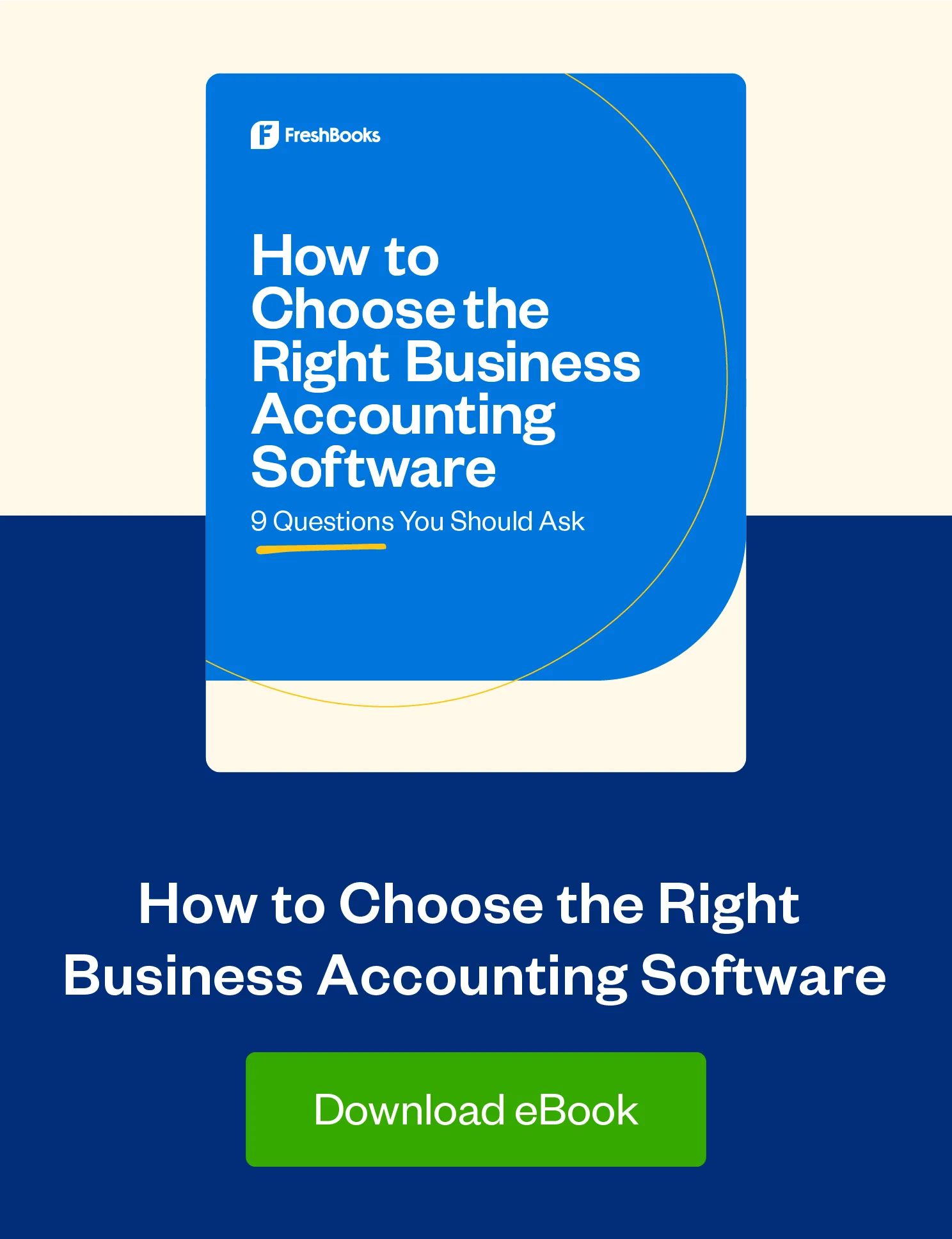Master reimbursable expenses so that you don’t leave money on the table.

As a small business owner or freelancer, it’s not uncommon to incur expenses on your clients’ behalf when working on projects. These are known as reimbursable expenses, and it’s perfectly acceptable to bill your clients for them.
The key, though, is to ensure your invoices don’t come as a surprise to your client. Otherwise, you may struggle to get your money or, worse, burn bridges.
To learn more about reimbursable expenses and how to bill your clients for them, read this complete guide.
Table of Contents
What Are Reimbursable Expenses?
Also known as billable expenses, reimbursable expenses are expenses incurred by you on your clients’ behalf while delivering work.
Reimbursable expenses also have a distinct business character—maybe you need to attend a conference for a client project and pay for a hotel—and to justify them, you’ll often have to provide evidence in the form of a receipt. In either case, they’re reimbursable because they’re out-of-pocket, and you can charge them to your client.
For employees, it’s usually far easier to determine what’s reimbursable, especially as companies generally provide clear guidelines.
For freelancers, it’s not because there aren’t clear guidelines. As a result, expense reimbursement is slightly more complicated. Pinpointing what’s reimbursable can be tricky, and you may even choose not to bill your client for certain reimbursable expenses.
For example, you probably don’t charge your client for a portion of your internet costs even though in many cases these costs are reimbursable, especially if incurred while on the road.
Examples of Common Reimbursable Expenses
For simplicity, below are examples of common billable expenses. Keep in mind that these expenses aren’t reimbursable in all cases. You’ll have to assess each situation, use some common sense and ask yourself:
- Is this expense necessary for the completion of work?
- Is it reasonable to charge my client for it?
- Am I incurring it on my client’s behalf?
If you answer yes to these questions, chances are it’s reimbursable. If you’re unsure, speak to an accountant, bookkeeper, or friend who has experience with billable expenses. And as you’ll see later, once you do decide an expense is reimbursable, just make sure your clients are aware that you’ll bill them for it.
Smaller Reimbursable Expense Examples
There are minor expenses you may incur on your clients’ behalf, which were unaccounted for at the beginning of the project. These include everything from printing, coffee, and even delivery and postage costs.
Maybe, at the last minute, your client asked you to courier the final product to them, and you now have to pay a postage fee. If this wasn’t included in the project fee upfront, this cost is reimbursable as an ad-hoc expense.
Or perhaps you incurred overseas phone or internet charges. For example, as a writer, you may have a set rate for conducting an interview, transcribing it and writing an article. The rate may exclude the cost of communication—maybe you use Skype. In these instances, you’ll have to top up your Skype credit. The cost of that communication now becomes reimbursable.
Even though these expenses are small, together they can add up to a large amount so you’d be wise to track and rebill all of them.
Larger Reimbursable Expense Examples
Then there are also larger reimbursable expenses such as travel, which includes meals, entertainment, lodging and transportation (taxis, air travel, etc.).
These are reimbursable if you’re on the road often for client work and, for example, have to book hotels and eat out. Obviously, just because something’s reimbursable, doesn’t mean you should go to town (pun intended). There’s usually an upper limit that you’ll agree to upfront with your client.
How to Record Reimbursable Expenses
Regardless of the type of reimbursable expense, it’s vital to track each one. That way, you have a record if your client asks for one. And you can rest assured you don’t leave money on the table.
The easiest way to capture billable expenses is to use accounting software. The right accounting software will:
- Automatically track your expenses—reimbursable expenses included—without you lifting a finger
- Let you snap a photo of a receipt with your phone and upload it instantly to the cloud
- Allow you to mark any expenses as billable, so you’re not forgetting to charge clients
- Make tax time a breeze as you’ll have a detailed record of all business expenses
For example, FreshBooks does all this. It lets you connect your bank account and then updates your FreshBooks acccount with the most recent spending activity on your account.
All you have to do is check the accuracy of these expenses, i.e., that they’re assigned to the correct categories and if they are reimbursable, the right client. From there, you can attach a receipt and add a markup (if applicable).
How to Manage Reimbursable Expenses in FreshBooks
Looking for step-by-step instructions on how to create and track reimbursable expenses in your FreshBooks account?
Once you’ve recorded an expense as billable and are ready to charge your clients, use your accounting software to create an invoice. How you create an invoice will differ depending on the software you use. But in FreshBooks you will follow these steps to rebill expenses.
Reimbursable expenses include any expense incurred by you on your clients’ behalf while you’re delivering work.
4 Best Practices for Collecting Reimbursable Expenses
Just because an expense is reimbursable, doesn’t mean you should bill your client for it. Before billing, follow these best practices.
1. Agree in Advance What Expenses Are Reimbursable
To avoid awkward or even angry conversations, when starting a new project set the rules in advance regarding what kinds of expenses will be billable.
You can have your own expense clause in your contract, or ask your client if they have a policy regarding expenses. When in doubt, ask. And always apply common sense by viewing the expense from your client’s perspective.
Would they consider it a reasonable expense? You don’t want to lose a client because they think you are taking advantage of them.
2. Itemize Expenses and Provide Supporting Evidence
Even once you’ve agreed on what’s reimbursable, you should itemize and give supporting evidence of your expenses where possible. Even if you just add one line item for “expenses” to your invoice, always attach an expense report with images of the original receipts and details of each charge.
An expense report is simply a report that itemizes all your expenses to track your spending and even includes applicable tax details. Your client probably needs these details for their own accounting and tax purposes, and the transparency will reinforce goodwill on both sides.
3. Bill Clients Within a Reasonable Amount of Time
It’s always good business practice to bill your clients for reimbursable expenses as soon as possible. You could, for example, bill for these expenses as they happen. Or, you could choose to submit billable expenses together with the final balance that’s due at the end of a project.
The sooner you bill your clients, the sooner you get paid. It’s also easier to resolve any disagreements (if there are any) and answer questions. Because let’s be honest, having to remember any expense-specific details a year later is hard.
4. Understand the Tax Implications
When you deduct expenses under meals, only 50% of the reimbursed expenses are deductible as per IRS rules. Someone has to take a 50% non-deductible expense for certain items, but it doesn’t necessarily have to be you.
If you’re reimbursed by your client for the cost of the expense and provide the client with adequate documentation, then the client has to account for the 50% on their taxes.
If you want to add a margin to the expenses, then you’ll have to claim the expenses yourself or register them as cost of goods sold (COGS).
This information can apply to most situations, but you should always check with a professional tax adviser who is familiar with your particular situation when preparing your taxes.
Always Track Your Reimbursable Expenses
Incurring expenses on your clients’ behalf is part and parcel of running a business. Just make sure that you bill clients for them—keeping the best practices for collecting expenses in mind—so that you don’t lose profits.
And remember: Before billing your clients, properly record these expenses so that you have an accurate record, don’t forget to charge your client and can produce receipts when needed. FreshBooks makes this all super easy.
With FreshBooks, you can automatically track your expenses, take a photo of a receipt and store it in the cloud, assign a client to an expense and mark it as billable. From there, simply pull that billable expense into an invoice and send it off to your client to get paid.
How an Interior Design Firm Simplifies Expensing With FreshBooks
Start using FreshBooks today to record and rebill your reimbursable expenses.
This post was updated in January 2020.

Written by Nick Darlington, Freelance Contributor
Posted on July 8, 2020

 Your Complete Guide to U.S. Tax Write-Offs for Small Business Owners for 2020
Your Complete Guide to U.S. Tax Write-Offs for Small Business Owners for 2020 Why You Should Track Your Business Expenses Daily
Why You Should Track Your Business Expenses Daily How to Claim Mileage on Taxes
How to Claim Mileage on Taxes




